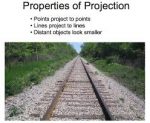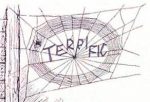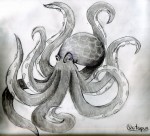I came upon an MIT News article about the work of Ila Fiete who studies brain functions, like the neurological processes that govern navigational reasoning about our surroundings. Fiete uses computational and mathematical tools. Her interest in biology, and her respect for the “aesthetic to thinking mathematically,” (as she put it) led her to […]
|
|||||
|
In my last post I tried to argue that Humberto Maturana’s biology of language might have something to say about the biological nature of mathematics. This biology of language that Maturana proposes is understood in the context of autopoiesis (the continuous self-creation of any living system) that is his fundamental definition of life. I […] A recent post on scientificamerican.com got my attention – no surprise given its title, Could Multiple Personality Disorder Explain Life, the Universe, and Everything. It was coauthored by three individuals: computer scientist Bernardo Kastrup, Psychotherapist Adam Crabtree, and cognitive scientist Edward F. Kelly. The article’s major source is a paper written by Kastrup, published this […] Earlier this month, Nature reported on Artificial Intelligence (AI) research, where deep learning networks (an AI strategy) spontaneously generated patterns of computations that bore a striking resemblance to the activity generated by our own grey matter – namely by the neurons called grid cells in the mammalian brain. The patterned firing of grid cells enable […] 
Deciphering the principles of self-organizing systems is often at the heart of new ideas in biology, including neurobiology. A complex, self-organizing system contains a large number of elements that have predictable, local interactions with each other, but these local interactions create global properties that cannot be predicted from even the most well-understood local events. This […] I have made the argument on more than one occasion that a refreshed look at mathematics may help illuminate the relationship between our experience of the physical and our experience of the thoughtful. Mathematics is a discipline characterized by complex relations among abstract things but, as has been explored from many directions, the action of […] Familiar mathematical structure is found in the neural activity that governs how the body orients itself and navigates its environment. Grid cells are neurons, found in areas neighboring the hippocampus, whose individual firings line up in a coordinate-like pattern according to an animal’s movement across the full extent of its environment. Their grid pattern acts […] 
The slow and steady march toward a more and more precise definition of what we mean by information inevitably begins with Claude Shannon. In 1948 Shannon published The Mathematical Theory of Communication in Bell Labs’ technical journal. Shannon found that transmitted messages could be encoded with just two bursts of voltage – an on burst […] 
Can the presence of intelligent behavior in other creatures (creatures that don’t have a nervous system comparable to ours) tell us something about what ideas are, or how thought fits into nature’s actions? It has always seemed to us humans that our ideas are one of the fruits of what we call our ‘intelligence.’ And […] The analysis of collective behavior is quickly becoming cross-disciplinary. I wrote a few years ago about a study that analyzed the coordination of starling flocks. That post was based on the work of Thierry Mora and William Bialek, presented in their paper Are Biological Systems Poised at Criticality. The paper was published in the Journal […] |
|||||
|
Copyright © 2025 Mathematics Rising - All Rights Reserved Powered by WordPress & Atahualpa |
|||||


Recent Comments